Honda Fit: A/T System Description - Hydraulic Controls (A/T)
The valve body includes the main valve body, the regulator valve body, and the servo body. The ATF pump is driven by splines on the end of the torque converter which is attached to the engine. Fluid flows through the regulator valve to maintain specified pressure through the main valve body to the manual valve, directing pressure to each of the clutches. Shift solenoid valves A, B, C, and D are mounted on the servo body. A/T clutch pressure control solenoid valves A, B, and C are mounted on the transmission housing.
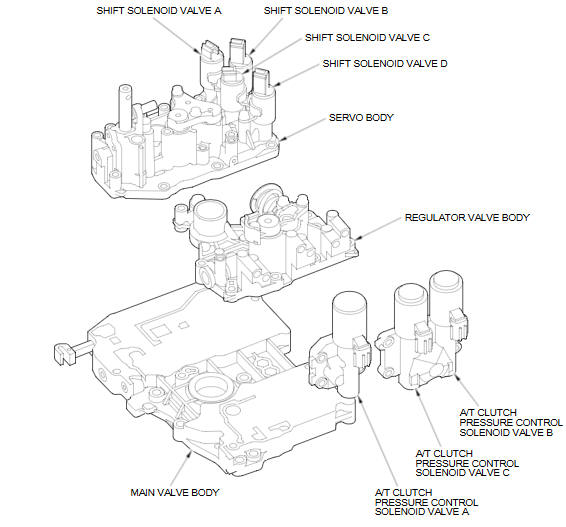
Main Valve Body
The main valve body contains the manual valve, cut valve B, shift valves A, C, and D, the relief valve, the lock-up control valve, the cooler check valve, the servo control valve, and the ATF pump gears. The primary function of the main valve body is to switch fluid pressure on and off to control hydraulic pressure going to the hydraulic control system.
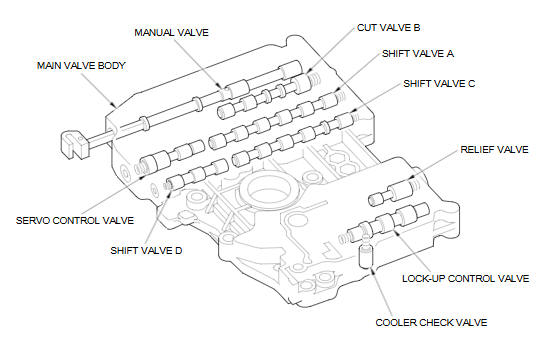
Regulator Valve Body
The regulator valve body is located on the main valve body. The regulator valve body contains the regulator valve, the torque converter check valve, the lock-up shift valve, the 1st accumulator, and the 4th accumulator.
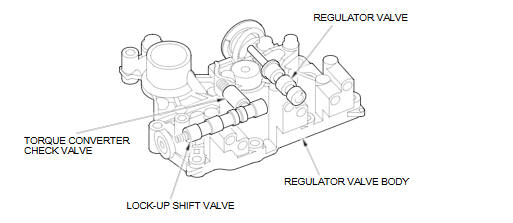
Regulator Valve
The regulator valve maintains constant hydraulic pressure from the ATF pump to the hydraulic control system. While also furnishing fluid to the lubrication system and torque converter. Fluid from the ATF pump flows through B and C. Fluid entering from B flows through the valve orifice to the A cavity. This pressure in the A cavity pushes the regulator valve to the spring side, and this movement of the regulator valve uncovers the fluid port to the torque converter and the relief valve. The fluid flows out to the torque converter and the relief valve, and the regulator valve returns under spring force. According to the level of the hydraulic pressure through B, the position of the regulator valve changes, and the amount of fluid from C through the torque converter changes. This operation is continued, maintaining the line pressure.
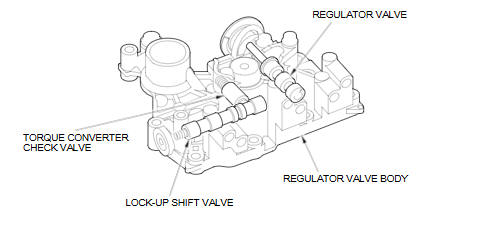
Increases in hydraulic pressure according to torque are regulated by the regulator valve using stator torque reaction. The stator shaft is splined to the stator in the torque converter, and the stator shaft arm end contacts the regulator spring cap. When the vehicle is accelerating or climbing (torque converter range), stator torque reaction acts on the stator shaft, and the stator shaft arm end pushes the regulator spring cap in the direction of the arrow in proportion to the reaction. The stator reaction spring compresses, and the regulator valve moves to increase the line pressure which is regulated by the regulator valve. The line pressure reaches its maximum when the stator torque reaction reaches its maximum.
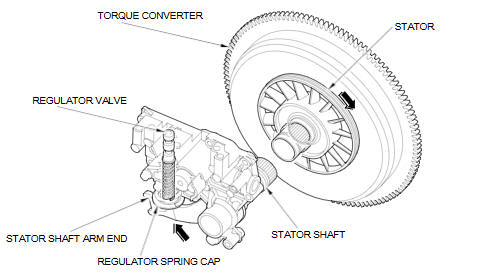
Servo Body
The servo body is on the main valve body. The servo body contains the servo valve, shift valve B, cut valve A, accumulators for 2nd, 3rd, and 5th, and shift solenoid valves A, B, C, and D.
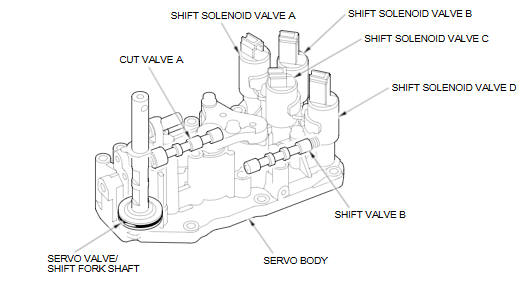
Accumulator
The accumulators are located in the regulator valve body and servo body. The regulator valve body contains the 1st and 4th accumulators, and the servo body contains the 2nd, 3rd, and 5th accumulators.
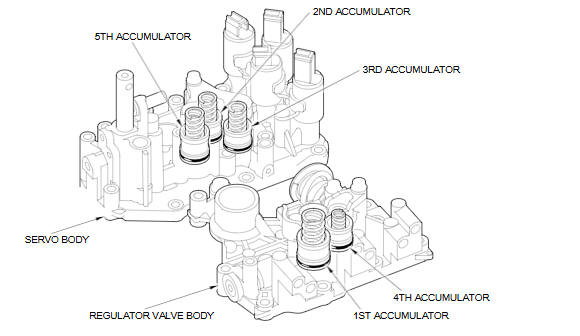
See also:
If the Brake System Indicator Comes On
■ Reasons for the indicator to come on
• The brake fluid is low.
• There is a malfunction in the brake system.
■ What to do when the indicator comes on while driving
Press the ...
Shift Lever Housing Replacement (M/T)
NOTE: Take care not to scratch the center console, dashboard, and related
parts.
Remove the center console.
Remove the harness clamps (A).
Remove the lock pin ...
Three Way Catalytic Converter
The three way catalytic converter contains precious metals that serve as catalysts,
promoting chemical reactions to convert the exhaust gasses without affecting the
metals.
The catalytic converte ...
